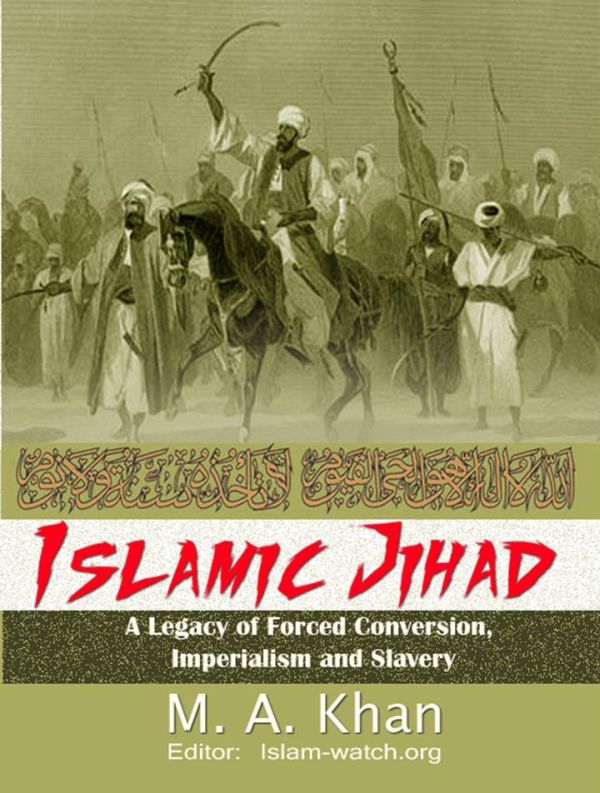A pip into the unknown saga of Muslim enslavement of Europeans in North Africa...
Who were the Barbary Corsairs?
It is well known that European nations began colonizing many Asian and African countries in 16th century. For example, the Portuguese established colonies in India's Goa and Southeast Asia at the beginning of the 16th century, the Spaniards started their colonization of the Philippines in the 1560s, while the British East India Company started colonizing India in 1757. But few of know that even those European nations were under the threat of piracy and depredations by Muslim pirates from North Africa. These Barbary pirates used to intercept commercial vessels in the sea, loot the merchandise as booty and capture white Europeans sailors as slaves for selling in the slave-markets of the Middle East and other Muslim countries. In addition to mid-sea piracy, they used to launch raids in the coastal villages of Europe and capture both male and female Europeans and forced slavery on them.
 Muslim Sheikhs inspecting the private parts of a female slave for buying |
The term Barbary States is used for the Muslim States of North Africa, namely Tripolitania, Tunisia, Algeria, and Morocco, and the pirates operating from these Barbary States were known as Barbary corsairs. Previously, these states were vassals of the Ottoman Empire, but from the 16th century, Tripolitania, Tunisia, and Algeria were turned into autonomous provinces of the Turkish Empire. In the 17th and 18th centuries, the booty, ransom and slaves obtained from attacks on the Mediterranean towns, European ships and from occasional forays into the Atlantic became the main source of revenue for local Muslim rulers.
Major European naval powers made attempts, albeit unsuccessfully, to destroy the corsairs. On the whole, countries trading in the Mediterranean paid ransom to free the captives or paid tribute to save their ships from attacks. But as European states achieved supremacy over Islamic powers, the United States, followed by Britain, Netherlands and France struck the Barbary States militarily in the early 18th century. Especially after the Napoleonic wars, American and European fleets intensified their war against the pirates and practically destroyed pirate gangs. First the American attacked the Barbary States forcing them to stop attacking American ships; next in 1816, an Anglo-Dutch struck the Barbary States to end the Barbary corsair menace. Eventually the French conquest of Algeria in 1830 decisively put an end to the Barbary piracy and enslavement of Europeans.
“An ultimatum from the European Congress of Aix-la-Chapelle (1819) compelled the Dey of Tunis to give up piracy. The Tunisian fleet was subsequently sent to help the Ottomans in Greece and was destroyed (1827) at the battle of Navarino. In 1830, France, after a three-year blockade of Algiers, began the conquest of Algeria. The Ottoman Turks were able to reassert (1835) direct control over Tripolitania and end piracy there. About the same time the sultans of Morocco, who had occasionally encouraged piracy, were forced by France, Great Britain, and Austria to give up plans to rebuild the Moroccan fleet, and North African piracy was at an end”, says a historian.[2]
Slave trade by the Barbary Corsairs
The Barbary Slave Trade was mainly confined to the slave markets, which flourished on the Barbary Coastal states, namely modern-day Morocco, Algeria, Tunisia and Western Libya between the 16th and 19th centuries. While the Barbary pirates used to capture black African slaves, they were more interested in capturing white European slaves, who were in high demand and could fetch 20 to 100 times more in revenue. The slave markets in North Africa were unique in selling both the black African and white European slaves -- the latter acquired through raids on European ships and coastal towns and villages.
“Pirate raids for the acquisition of slaves occurred in towns and villages on the African Atlantic seaboard, as well as in Europe. Reports of Barbary raids and kidnappings of those in Italy, Spain, Portugal, England, Ireland, Scotland as far north as Iceland exist from between the 16th to the 19th centuries. Between 1 million and 1.25 million Europeans were captured by pirates and sold as slaves during this time period. Famous accounts of Barbary slave raids include a mention in the Diary of Samuel Pepys and a raid on the coastal village of Baltimore, Ireland, during which pirates left with the entire populace of the settlement. Such raids in the Mediterranean were so frequent and devastating that the coastline between Venice to Malaga suffered widespread depopulation, and settlement there was discouraged,” says a study.[3]
Robert Davis, professor of history at Ohio State University, developed a scientific method to calculate the number of white Christians, enslaved along Africa’s Barbary Coast. He reached the conclusion that a million or more European Christians were enslaved by North African Muslims in between 1530 and 1780 – a far greater number than had ever been estimated before.[4]
“Pirates from cities such as Tunis and Algiers – would raid ships in the Mediterranean and Atlantic, as well as seaside villages to capture men, women and children”, says Davis.
The impact of these attacks by the Barbary pirates was devastating. France, England, and Spain each lost thousands of ships. Long stretches of the Spanish and Italian coasts were almost completely abandoned by their inhabitants. Through most of the 17th century the English lost at least 400 sailors a year to the Barbary slave-hunters. Even Americans were not immune. For example, one American slave reported that 130 other American seamen had been enslaved by the Algerians in the Mediterranean and Atlantic just between 1785 and 1793.
“Much of what has been written gives the impression that there were not many slaves and minimizes the impact that slavery had on Europe. …Most accounts only look at slavery in one place, or only for a short period of time. But when you take a broader, longer view, the massive scope of this slavery and its powerful impact become clear”, says Davis.
After the United States took decisive military actions in 1815, followed by an Anglo-Dutch joint raid in 1816 to destroy most of the pirate fleet, the rulers of Barbary States were forced to sign agreements, prohibiting the practice of piracy and enslaving Christians. As attacks on ships of other European ships continued, France undertook their own military attack against the Barbary States. Britain attacked Algiers again in 1824 to bring an end to Barbary piracy and enslavement. However, piracy and enslavement in North Africa ended only after France started the occupation of North African states in 1830. Nonetheless, Muslim enslavement of Black Africans continued further on.
References:
[1] http://en.wikipedia.org/wiki/Dey
[2] http://www.infoplease.com/ce6/history/A0806137.html
[3] http://answers.yahoo.com/question/index?qid=20101024194909AAL9sp3
[4] http://researchnews.osu.edu/archive/whtslav.htm
[5] Four videos: http://wn.com/Barbary_Slave_Trade



Comments powered by CComment